By
Team DIGO | 01/16/2012 | in
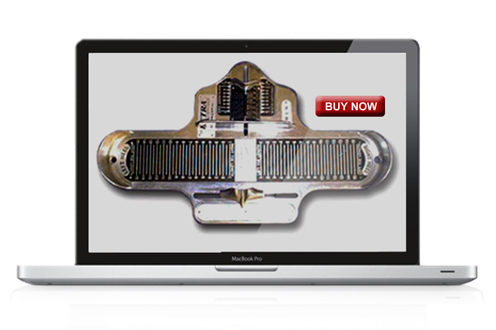
You have to try on shoes. So who’s going to buy them online?
Turns out the answer is “a lot of people!”
Zappos earned trust and a lot of loyal customers by taking the cost and risk out of ordering shoes online. Free shipping both ways means people can order, try, return, repeat and end up with some awesome shoes that fit.
Zappos believes they are in the customer service business, and customers believe it too.
If you want to build a direct marketing flash-in-a-pan, come up with a product or offer that’s irresistible. If you want to build a direct marketing brand, then build a service culture. Analyze the problems of your category and innovate ways to solve them. Then, deliver.
By
Team DIGO | 01/06/2012 | in
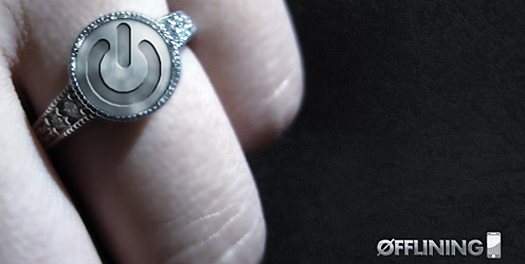
We introduced the world to the concept of Offlining and we gave this trend its name. DIGO “adopted the off button” as our pro bono client, created an organization, and showed how far big ideas, clever word-of-mouth marketing and a few dollars could go in building social buzz and even a cultural movement.
A year and a half later, the New York Times has published a very interesting story on Offlining as Luxury. Is offline the new black? Probably not, but it’s definitely a hot new destination.
We predicted wireless free “dead zones” would become precious and worthy of the efforts of conservationists and history preservationists. Today more and more people of means are willing to pay a premium for a sojourn with the added luxury of device-free respite.
We love it!
Read the New York Times story here.
By
Team DIGO | 01/05/2012 | in
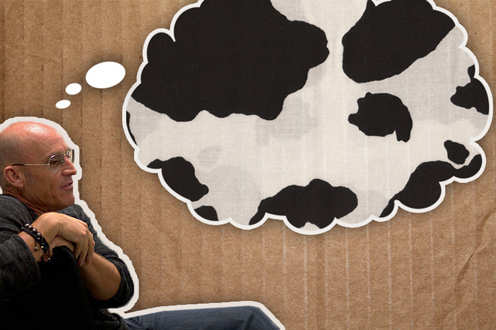
Many people made small fortunes in the direct-to-consumer computer boom of the nineties and early 21’s century. Unfortunately for many of those people, the small fortunes were made out of much larger fortunes.
When we began working with Ted Waitt, founder of Gateway, his company and Michael Dell’s, founded in the same year, were just two of 7,500 PC direct marketers in a gold rush mentality.
But Ted wasn’t just a savvy direct marketer, he was also a brilliant brand builder. He knew the shakeout was coming long before others realized it. While most people would just count their millions and feel brilliant, Ted had a small City to keep employed, so he had to peak around corners and try to see what was coming.
Luck for North Sioux City, South Dakota, Ted saw keenly and knew what to do. He’s the guy who said, “We have to stand out in a way that anybody can see. Let’s put cow spots on the boxes.”
What a brilliant, entrepreneurial, brand-driven growth move. Frugal, because Gateway already owned the boxes. They were what we call at DIGO, “owned media.” We counsel, beg and hector our clients not to miss the media right in front of them… the touch-points they own. We used creative hangtags and sewn in labels for Joseph Abboud. We put men running in human-sized hamster wheels in the window of Crunch gyms. In the seatbacks of JetBlue planes, we placed Airplane Yoga and Flying Pilates cards. In the airport terminals, we hung punching bags labeled, “Middle Seat” and “Missed Your Flight?” Snapple got messages under their caps, and Vitamin Water used the labels of the bottles to tell a unique and charming story every time.
What Ted did was transcend the limitations of the direct marketing tribe. He had a bigger vision.
It’s been my observation that what’s great about human nature is that we can transcend our limitations. What’s perhaps not so great is that most people and companies don’t. Marx saw history as proceeding from material conditions in a sort of a “follow the money” analysis. It’s true that business model seems to determine the strengths and the limits of most businesses. But every day, I see history being made by precisely those leaders who are able to transcend those limitations.
Of all the limiting factors, the greatest of all is probably YOU.
Limitations. We all have them. And one of the greatest sucks on potential is that we don’t know what they are. You want to hack into your own system, and see it for what it is. After that, writing yourself some new code gets a lot easier. So here’s a tool for looking at the tribe that is your business and your industry. This, by the way, is what leaders do. “Innovation is what defines leaders and sets them apart from followers.” So said Steve Jobs. Right again, Steve.
Leaders look at their own prejudices and unconscious systems, and they drill in with better questions. Once they have freed their own minds, they use their new knowledge of the problem to open the minds of others.
So, the world of followers is a Marxian world. People do as their business models dictate. They follow the money. They follow the system that makes the money flow. Unless and until the money stops flowing, they have predictable strengths and weakness. They are limited by their special relationship to the means of production.
Leaders make all of that mechanistic thinking a lie. Leaders challenge the complacency of those who might ride the conveyor belt of life as predictable extensions of the machine. And by doing this, innovative mid-market growth companies are the primary scrubbing bubbles of capitalism.
By
Team DIGO | 01/04/2012 | in
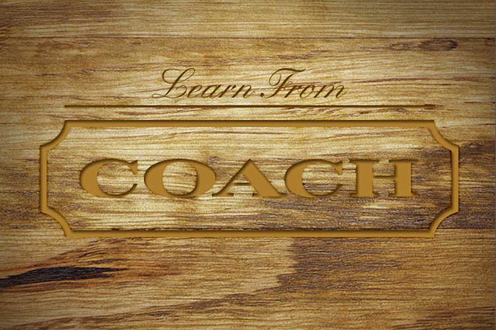
One of the wonderful things about agency life is that you get to learn from so many smart clients. When it comes to luxury marketing, I’ve had the best seats in the house. Dom Perignon, Moet & Chandon, Mikimoto, Van Cleef & Arpels, The Plaza Hotel, Fairmont, Jumeirah, Starwood Preferred Guest, Paul Stuart, Lotus… Coach.
According to the CEO of the Luxury Institute, Milton Pedraza, “Luxury is defined by wealthy consumers as the best in design, quality, craftsmanship and service, all combined into an extraordinary experience that is truly relevant, both functionally and emotionally.”
Of those elements — design, quality, craftsmanship and service — is there one more important than the others?
In a word, yes.
I would offer that service — a fierce customer-centric ethic — is the essential value. Design, craftsmanship and the other elements of product quality are table stakes and too easily matched to be decisive over time.
A recent study of the unmatched brand success of Coach speaks to this eloquently:
Luxury Institute empirical data shows that Coach has achieved what no brand in the luxury handbag category has been able to in a five-year period with affluent women in the US: highest brand familiarity by a wide margin with an average of 73%. In addition, an impressive 25% of the sample of affluent consumers has purchased a Coach handbag in the last 12 months and 25% intend to purchase Coach as their next handbag. For comparison, the next highest rated brand has a purchase rate of 6% and purchase intent rate of 5% in the latest survey.
Coach is also the brand that most wealthy women have been willing to recommend to their friends and family for three out of five years and it has always been ranked within the top three most recommended brands with an overall average of 65%.
The brand is also top-of-mind when shoppers think of superior customer service. In a recent WealthSurvey, Coach was the handbag brand that was cited as having the best customer service on an unaided basis by premium handbag shoppers, outperforming its nearest two rival European competitors three to one. No other luxury handbag came close to achieving these results (see Graph A). Coach, to its global credit, demonstrates similar brand strength in Japan, one of the world’s most sophisticated luxury markets.
Achievements like these are the empirical rewards of a highly disciplined customer culture. Great product is extremely important and Coach is rated among the top quality handbags brands. However, a consumer-centric culture is the critical factor in consistently delivering extraordinary customer experiences.
By design, Coach is a consumer-centric brand built on strong core values. In an increasingly commoditized and highly competitive global luxury handbag market, it is simply not enough to outperform your competition on products; you have to dramatically out-behave them.
The kind of service that seduces prospects into repeat customers and generates word-of-mouth stories is what it takes to build a powerful luxury brand. Luxury customers come back for an experience that they love and can repeat. Understand what the luxury experience means to them and deliver at a legendary level.
Read the rest of the Luxury Institute’s report on Coach here.
By
Team DIGO | 12/30/2011 | in

People will work hard even when there’s no money and little credit involved, if the challenge and subject matter moves them.
Thousands of volunteers around the world can keep an encyclopedia up to date and accurate enough to be incredibly useful without a great deal of hierarchy.
All of this can be led with a relatively small team paid for by donations, not advertising or commerce.
The resulting content can lead search results in many categories and become a cornerstone of the web.
By
Team DIGO | 12/28/2011 | in

Marketing genius Seth Godin founded Squidoo. This in itself is not a guarantee of success. Godin has founded many things, and quite a few of them didn’t work out, as he will freely admit in his own bio.
I’d bet on Squidoo. It has more than the spark that Godin brings to everything he does. It operates as the intersection of several trends that put together a compelling engagement model that is also a likely business model. This is rare.
On Squidoo, people put up their own “lenses.” A lens is basically a web page or site, that is the owner’s view of a situation.
You could do a lens about your love of a certain breed of dog. Or you could do one about a kind of chili you live. A recent “Lens of the week” winner was about a man’s childhood memories from the 1940.
Anyone can put up and maintain as many lenses as they want. In this sense, Squidoo is not unlike WordPress, Flickr and other similar sites. But, there’s an added incentive and focus for Squidoo lenses – money.
When there’s interaction and advertising revenue from your Squidoo lenses, Squidoo splits that revenue between Squidoo, charity and you.
People who play the game well can make some real money.
All of us can learn from the thinking that went into Squidoo.
By
Team DIGO | 12/14/2011 | in
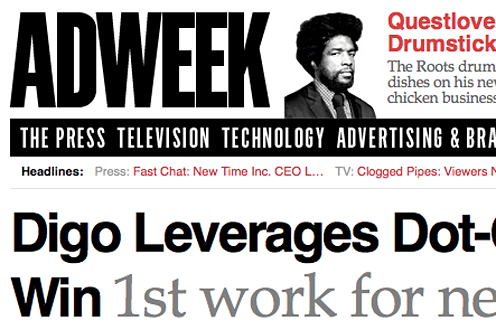
Long-time relationships are business as usual to us, but apparently qualify as news to the rest of the industry. ADWEEK writes about our most recent reunion with a long-time friend and client in the article: “DIGO Leverages Dot-Com Connection in Latest Win. 1st work for new client BLUEFLY expected in 2012.”
By
Team DIGO | 12/13/2011 | in

Professor BJ Fogg, founder of the Persuasive Technology Lab at Stanford University, discovered a relatively simple principle for making every interaction more persuasive. I’ve further simplified (without oversimplifying) it here. You can apply this to everything you touch to make it more persuasive and effective.
What Dr. Fogg discovered in his research is that three factors impact the persuasiveness of virtually anything. The first is motivation – as in how motivated is the person. The second is ease – as in how easy is it to take the required action. And the third is time – is there a trigger at the intersection of the peak of motivation and ease?
It comes down to this. High motivation plus easy to do at exactly the same time = the action that leads to persuasion.
Here’s a key you can apply to un-sticking the potential for persuasion in literally everything you touch. Ask:
- Is this as compelling as it can be? Have we captured and whipped up the motivation of the audience?
- Have we made this as easy as it can be to do?
- Will the audience experience both the motivation and the ease at exactly the same time? (trigger)
This is part of our system for accelerating brand-driven growth® at DIGO. Find resources and tools to get even more persuasion and growth from this insight here.










